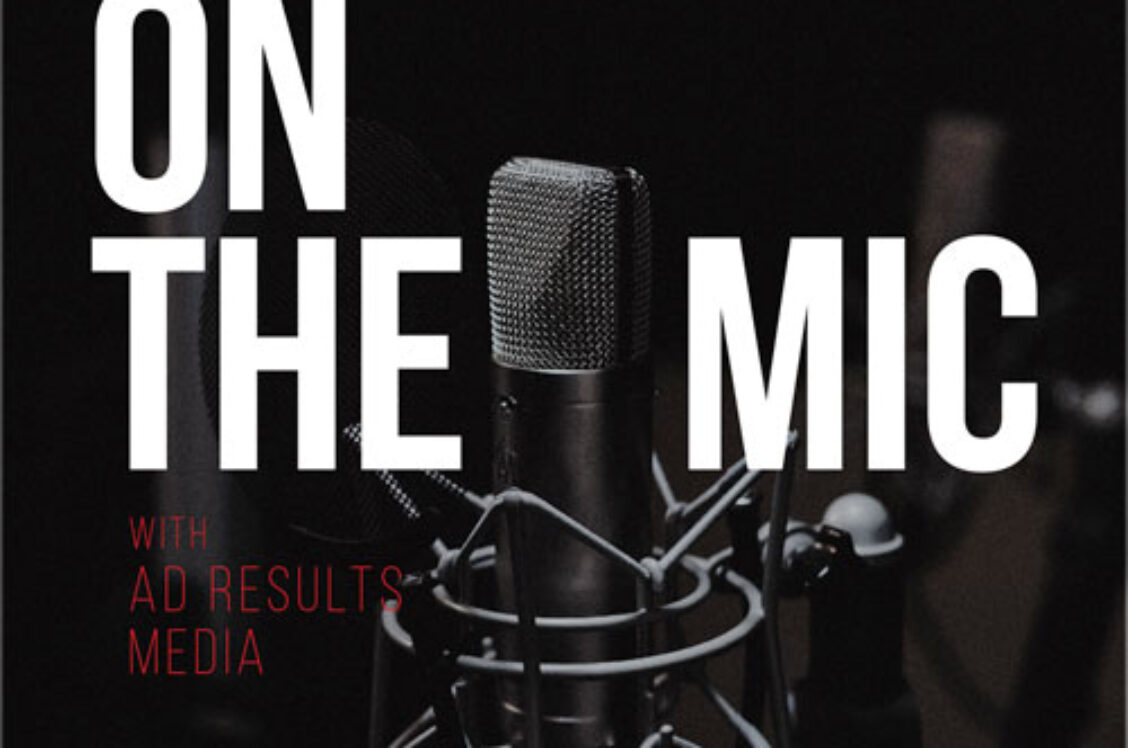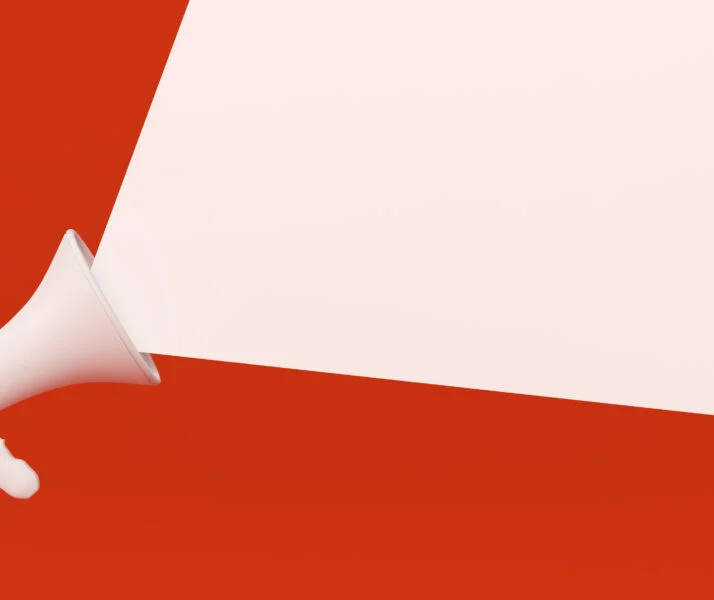
In part 1 of our Copy Writing 101 Series, we dig into one of the most important aspects of creative and copy writing: research strategies, or, how to ask ALL the questions. Key topics include: Writing what you know, analyzing your findings, customer focused research, and the buyers journey.
Podcast Transcript
(0s):
Hi there listeners. I’m Lindsay Boyd, director of trafficking compliance at Ad Results Media, and you’re listening to On the Mic and Ad Results Media podcast. We started on the Mic to give you a behind the scenes. Look at the inner workings of this ever-changing industry. In the 20 plus years, we’ve been in business Ad Results. Media has become one of the largest performance Audio advertising agencies in the U S we’ve been fortunate enough to work with some amazing clients, including numerous fortune 500 companies, tech, startups, and direct to consumer brands. Now it’s time for us to share what we’ve learned in the years. We’ve spent helping our clients succeed in advertising across channels, like Podcast, radio, streaming, audio, and YouTube. And what better way to do that than with an audio program of our own.
(41s):
During our next four segments, we will be meeting with senior copywriter, Nathan spell, as we dive into copywriting 101. So without further ado let’s get started. And that’s the great thing about stamps.com. They grow with you as much fun as I had. I couldn’t wait to get back to my sleep number bed. I love my third love bras. They’re hands down the most comfortable bras I’ve ever owned. I love making blue apron. I love it. It’s my me time. Ben, thank you so much for joining me today. I’m super excited to kick off this series with you.
(1m 26s):
First of all, I want to dive right into our first topic of the Series, which is research or asking all the questions. Yeah. Asking all of the questions. That’s that’s that’s research basically. Yeah. It’s really exciting. So I I’m really glad to be here. Awesome. So why don’t we start off with a bit of a kickoff question. So what exactly is the point of researching? Why wouldn’t you just let the ideas flow
The Foundation of Effective Copywriting: Why Research Matters
Anytime you’re writing in general, but I think it’s especially important for when you’re writing an Ad. You want to write what you know, which has to say you don’t want to go to the blank page with the guests and, you know, obviously in a creative writing, you know, since there’s like writer’s block in, in terms of Advertising, there’s this idea that, you know, you need to actually have a lot of input on the front end of the process for the output to be valuable.
(2m 18s):
So researching is really about finding what is the big, you know, Business problem that we’re trying to solve. And how can we marry that to the consumer problem? We use words like consumer that’s just to say the person on the other end of the Ad, there’s a real person there. They’re not just this abstract consumer, but you know, like the research stage is really about understanding all the information that we can get on, not just the brand, but the, the, the person that we’re talking to. And as much as we can, if we want to go, you know, where that person really is. So if we can do, you know, ideally if we can to be proactive with surveys, that’s one route, but ah, you know, sometimes you have to do, you know, more passive sources of research, but ultimately the goal is always just to understand as much as you can before you start writing.
(3m 11s):
Okay. Okay. I get it. So if I was going to start a campaign, where should I be focusing during that research stage?
Audience-Centric Research: Focusing on the ‘Real Person’ Behind the Ad
The way I think about this is ultimately there’s two, there’s a, there’s a, there’s a typical problem. I think, where, where research goes wrong, which is it’s not focused on the consumer, if you will, the person that you’re writing to as much of the audience, it might be more focused on the brand. And so, you know, ideally the research that you do is always focused on the audience. Obviously you need to make decisions that are brand centric. So, you know, we talk about voice and tone.
(3m 52s):
We might do competitive analysis, but ultimately the, the motivation behind that research is to understand the person. So, you know, even voice and tone, which has to, I think typically like a branding idea, right? You’re really thinking, how does the person want to be approached? Not so much, how do we want to approach them, but do they even like the way that we speak to you, they like the tone and then we take with them. And, and so if you think about competitive analysis as well, it’s like, how do they interact with our competitors? Not how do we want them to interact? How do we want them to view the other, you know, brands in this space, but you know, what’s really there, right?
(4m 33s):
I feel like, especially with, with what we do with Podcasting, you know, we, we really hit that note by kind of targeting how the hosts approach their, their listeners. Like they know what they, yeah. They know what they want to hear, so they can take your ideas as a copywriter and, you know, kind of marry that brand, I guess, with their own personal spin. Right. So I think that that’s a, a really unique and, and we found it to be like a really effective way of, Yeah, well, no one, no one knows the audience better. Right. I think then the, the hosts of a show like that, they’re the ones that really understand their audience.
(5m 16s):
So it’s always going to be up to them to take that even further to connect it, that, that last kind of, if you will, that like 2% of, of connection, but like on the copywriting side, we want to do as much as we can to try to think, not just about the audience of like a show, but the right person for this product or brand like, there’s, there’s always going to be an ideal person you’re trying to connect with. So not everyone, you know, once your widget, but the person that does, I mean, widget might be the wrong, but I’m using a stand in here. So like, you know, whatever your product or brand is your trying to connect to very specific subset of people.
(5m 56s):
So we always want to find the right message to connect to that subset, even whenever you’re using like, you know, a tool like a persona or an avatar, which is like this idea of like, kind of coming up with a snapshot of a ideal customer like that, that is always, it should always be motivated by really trying to understand what an actual person, if that makes sense. So, so the focus has understanding the customer first, what do you do with all the information after that? Ultimately the information is important, but it’s not enough. You can’t just research your way into solving the problem. Or I should say you can’t just gather information and solve the problem that way.
From Data to Story: Crafting the Core Truth and ‘Big Idea
(6m 39s):
But researching has another step, which is actually analyzing the information. You want to find some sort of a core truth. If you’re in on the lingo, you might call it a Ad concept. But the point is that, you know, what is something that is true, that resonates about the brand, about the product? So an example I like to, I like to think about is the dairy campaign that everyone knows, got milk. The campaign that single-handedly demonstrated how many people are lactose intolerant. I think most people had no idea until we started buying more milk. Yeah, I definitely would. I definitely remember plenty of magazines with the, the milk mustaches, But if you think so, the core truth of that campaign that research uncovered was that people don’t think about milk until they’re out of it, which is not a, it’s not actually necessarily a good thing.
(7m 34s):
If you’re the, the, the dairy industry, you would rather, you know, people think about milk all the time, but like, you know what I mean? That’s actually how I think clients, I say clients, but like really any brand, any, any company, ideally, our customers are always thinking about us, but the reality is that they’re not. So the core truth is like, what would they be thinking? So with the milk industry, the dairy industry is to say the courtroom is the only way that you get to a campaign like gut milk. And it resonates because people, you know, whether you’re making a bowl of cereal, are you trying to pick a cake or whatever that feeling of, Oh, we’re out of milk.
(8m 15s):
I forgot to get milk. That feeling is really resonant. Like everyone’s had that experience. And that’s, I think why that kind of, of, you know, obviously it’s a, it’s a pretty high level concept and it was really versatile though. So I think that’s, what’s really interesting. Yeah, for sure. The idea of a core truth. Okay. Yeah. So like thinking like your, at a restaurant and like, Oh, instead of Sprite, maybe I should get my milk. Like, it’s like, it’s there, like it’s in your, you know, it’s in your head, you’re going to think about, totally think about that. So, so overall is centrally. The concept is the big idea, Right? So the big idea is it’s something that comes from the raw material. It comes from the research and the understanding it’s not guesswork.
(8m 59s):
You know, I think there’s this idea of like the creative work. That’s just like, you know, they’re just making ideas happen. There’s like this kind of freewheeling idea. But the reality is that there’s a lot of, I mean, obviously we’re talking about research, so it takes time and space like to take all the information and, and really mine it analyze it because the goal ultimately is to find a new way of using data that everyone, everyone has access. The reality is the facts are out there for everyone. And so the question is not, what are the facts? How much is like, what are you going to do with all of those facts?
(9m 41s):
So the research stage is really actually creative. Like it’s very integral because what you’re doing is taking all the data, you’re deconstructing it and then you’re reconstructing it into something that admittedly is like much smaller than all that research. It’s more targeted thing, but it’s that deconstruction reconstruction that makes research like a really important part of the creative process. I like the idea of that. I’m pretty sure in school I would of never considered research creative in any way. No. So I love That research, But you put the creative spin on it and suddenly it becomes fun. So how does the big idea exactly.
(10m 22s):
Play out in an ad And the best way to think about this is in terms of story? I think admittedly, like the story thing has been played up a lot and, and maybe in a bad way, like I think some brands think about using storytelling and they’re really thinking about telling the story of themselves. And that’s actually the opposite of what I’m talking about. We use a storytelling framework in the sense that as much as we can, we want to cast the customer, which again, that’s a real person. We want to cast that real person on the other end of an ad as the main character in this story, you know, this is, this goes back pretty far like Aristotle, you know, so the idea of like intention and obstacle, the idea of like a character who has this big goal and objective, the whole thing that moves a story forward is that there’s an obstacle to that goal.
(11m 18s):
So if you remember seventh grade English, I do The idea that like, there’s all these conflicts that come up that get in the way, ultimately what we’re trying to do with all this research is connecting the data to the reality. So there’s a real person. What intentions do they have? What obstacles are getting in their way? And I know that sounds kind of heavy, but if you think about almost any successful, every successful campaign, I should say, just do it. Everyone knows, just do it. What’s going on there. Well, Nike says, okay, there’s a person on the other end. They’re not just buying shoes. They want to be the next superstar athlete, but there is this internal conflict.
(12m 4s):
There’s this obstacle that’s preventing them this voice, or maybe the lack of voice. And so Nike comes in to be that voice that says, just do it. And it’s really powerful because it resonates with this intention and obstacle thing. So ultimately the point is that the brand is not the main character. The brand is like, if anything, like an auxiliary character, a supporting role and the brand, but it’s an important supporting role. It’s, it’s like the brand has maybe the mentor or the guide or the person who comes in to pave the way or the Gandalf or the, or maybe not the Gandalf, but like the point is that in every major story, there’s a main character, but there’s all these other supporting characters and important.
(12m 47s):
And I think as much as your average Advertising in your marketing, in your messaging in general, cast yourself as a main character as a brand, it fails. And as much as it casts the other person as the, the main character, the focus is successful. I mean, obviously there’s a lot more that goes into it, but the point is that people don’t want to hear about how great you are. They want to hear about how great they are, because they already believe that they already, whether they think they’re great, they actually, they’re the focus of their life. That’s just how it is. Every sentence, every word choice should be directed at making them the focus and not making the brand focus. The brand comes in to, you know, enable them to provide them with some sort of a way through that obstacle that they’re facing.
(13m 36s):
So, you know, no one just wants to buy a widget. They have, you know, like even if you think about like an iPhone, you have a ton of reasons why you choose an iPhone over whatever other phones or, you know, we don’t have to use a specific phone as an example, but whatever purchasing choice you make, it’s not just cause you wanna spend your money. There’s always a reason behind it. Yeah. So I really love the imagery about brands being the supportive characters and, and kind of these guiding characters in, in a customer’s life. But it, in the end, how do you kind of take that big picture story view and map it to a more specific Ad message?
Mapping the Customer Journey: Storytelling and Brand as a Supporting Character
(14m 23s):
The big picture story view is essentially the customer journey or the buyers journey. And what I mean by that is every interaction that you have with a brand starts at square. One with awareness and the role of advertising is to a raise that awareness, but also to connect to the next stage and the journey, which is interest, ultimately the goal, the destination, if you will, might be way down the line for customer to make a purchasing decision, to become a, you know, a loyal brand advocate, if you will. But it has to start with that awareness, that interest and the consideration of your product as an option before they make that decision, that gap, the bridging of that gap is the role that Advertising.
(15m 13s):
And that’s where the story comes into making the, the customer, your main character, Right? And to go back to the idea that the brand should be a supporting role, going back to maybe the Gandalf example, the reason that that character is so, so lovable, or we, we love characters like that is because they bridge all these gaps in the story that they take us along with the main characters. So the role of, you know, a brand in a customer’s life and especially the role that the messaging plays is really to take them from, you know, I started out with this problem, this obstacle in the path, and this brand came along and helped me get through that.
(16m 0s):
And that is essentially the gap that we’re trying to, to bridge. So I think that makes sense. I hope that makes sense, but that’s, that’s essentially, that’s the idea of using the, the brand, the, this idea, the big story view of the brand, you take it and to get it down to something really practical, you have to think of what stage are they at and the buyers journey and how do we connect with them there. So in, in the customer journey, what we’re looking at, basically our five steps, awareness, interest, consideration decision, and hopefully a result For in favor of the brand. That’s definitely one I should emphasize that this is one way of thinking of the buyer’s journey.
(16m 45s):
The point is that however, you, you know, frame the buyer’s journey, thinking of the person on the other end, and this way is, is Key to focusing your messaging or on a real person. Otherwise you’re broadcasting to anyone and everyone, and that kind of messaging that really unfocused messaging is just not as effective. And that’s tying all of this back essentially to that creative research aspect, making sure that you’re not just kind of throwing things out to the wind, but instead you are making legitimate connections with your audience. Totally. And that’s why, whenever I was saying that the researching stage is highly creative it’s because this reconstruction, if you will, of the data into a narrative arc, that we’re interacting with people in a stage in a process that reconstruction is the role of research.
(17m 41s):
That is essentially the, the essence of any creative process actually, but especially a creative that is, you know, meant to target, you know, individual people the way Advertising is. I think that this has all been really interesting. It’s, it’s a lot of information that I haven’t looked at through this lens before. And I really appreciate you taking the time to kind of walk me through it. I, I feel like I’m leaving this session, like a little more enlightened before, you know, kind of, you know, maybe listening to two ads that I hear in a, with a little bit of a different view.
(18m 22s):
I will say, being, being on this side of the process now it’s really eye-opening for me as well. I think I listened to, I mean, I’ve, I’ve listened to a lot of ads. I listened, you know, I’ve listened to podcasts for awhile and it’s, it’s super interesting to think of it from the brand side and not, not from the consumer side alone. So I’m glad that this was helpful. Well, thank you Nathan, for taking the time to speak with me today, it’s been incredibly interesting and, and eye opening. Thank you, Lindsey. If you enjoyed this episode, be sure to subscribe for updates on future episodes and leave us a comment with your feedback or questions or ideas for future segments.
(19m 2s):
Please be sure to join us next time when we discuss voice tone and content and the important distinctions between the three, if you would like more info on Ad Results Media and what we do, please visit our website at Ad Results. Media dot com. This podcast was written by Lindsay Boyd and Nathan spell with sound mixing and editing by Freddie Trey ho. This podcast is an Ad Results, Media production.


